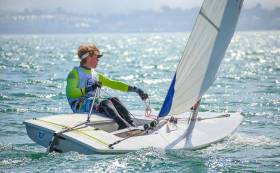Displaying items by tag: Rankings
Conway, Bateman & Kohl Top 2018 Laser National Rankings
#Laser - Fionn Conway, Chris Bateman and Atlee Kohl top the tables of their respective fleets in the final Laser class national rankings for 2018.
In the standard rig, the National Yacht Club’s Conway stormed ahead of names very familiar to Afloat.ie readers, from Liam Glynn (3rd) to Ewan McMahon (11th) and Johnny Durcan (14th), to list but a few.
In the Laser Radial, Royal Cork sailor Chris Bateman’s strong results at this year’s regionals put him clear of a strong youth fleet — Jamie McMahon (5th), Aisling Keller (7th), Michael Carroll and Michael O’Suilleabhain (2nd and 9th) included.
And in the Laser 4.7, Bateman’s 29er partner Atlee Kohl ends the year eight points ahead of class newcomer Alana Coakley.
Irish Improve In ISAF World Rankings After Santander
#Santander2014 - With the last races sailed at the 2014 ISAF Worlds in Santander, the biggest plaudits are going to the new world champions who've seen their stock rise in the global rankings.
But they're not the only ones with reasons to celebrate, as Ireland's sailing team have added to their impressive performances in Spain last week with a strong showing in the latest world sailing tables announced today (23 September).
Not content with being Ireland's first Olympic qualifier, James Espey has jumped four places in the Men's Laser rankings from 62nd to 58th. But he's not even the biggest riser among the Irish.
That accolade goes to Laser prospect Finn Lynch, who didn't have much to write home about in Santander but still rocketed from 296th in the world to 194th: a remarkable improvement of 102 places. Well done, Finn!
Andrea Brewster and Saskia Tidey may have narrowly missed out on Olympic qualification in the 49erFX, but they've jumped two placed in the world table from 29th to 27th – not bad at all for the development duo who've only been sailing together for a year.
Holding steady, meanwhile, are Rio-bound Annalise Murphy at 18th place in the world Laser Radial rankings, and Ryan Seaton and Matt McGovern, who are just one spot off the world top 10 in the 49er class.
It wasn't the best performance for independent Irish sailor Ross Hamilton, who slipped two places from 59th to 61st in the Finn class, but he will have further opportunity to improve his position and stake claim on a coveted spot in Rio for the 2016 Olympics.






























































